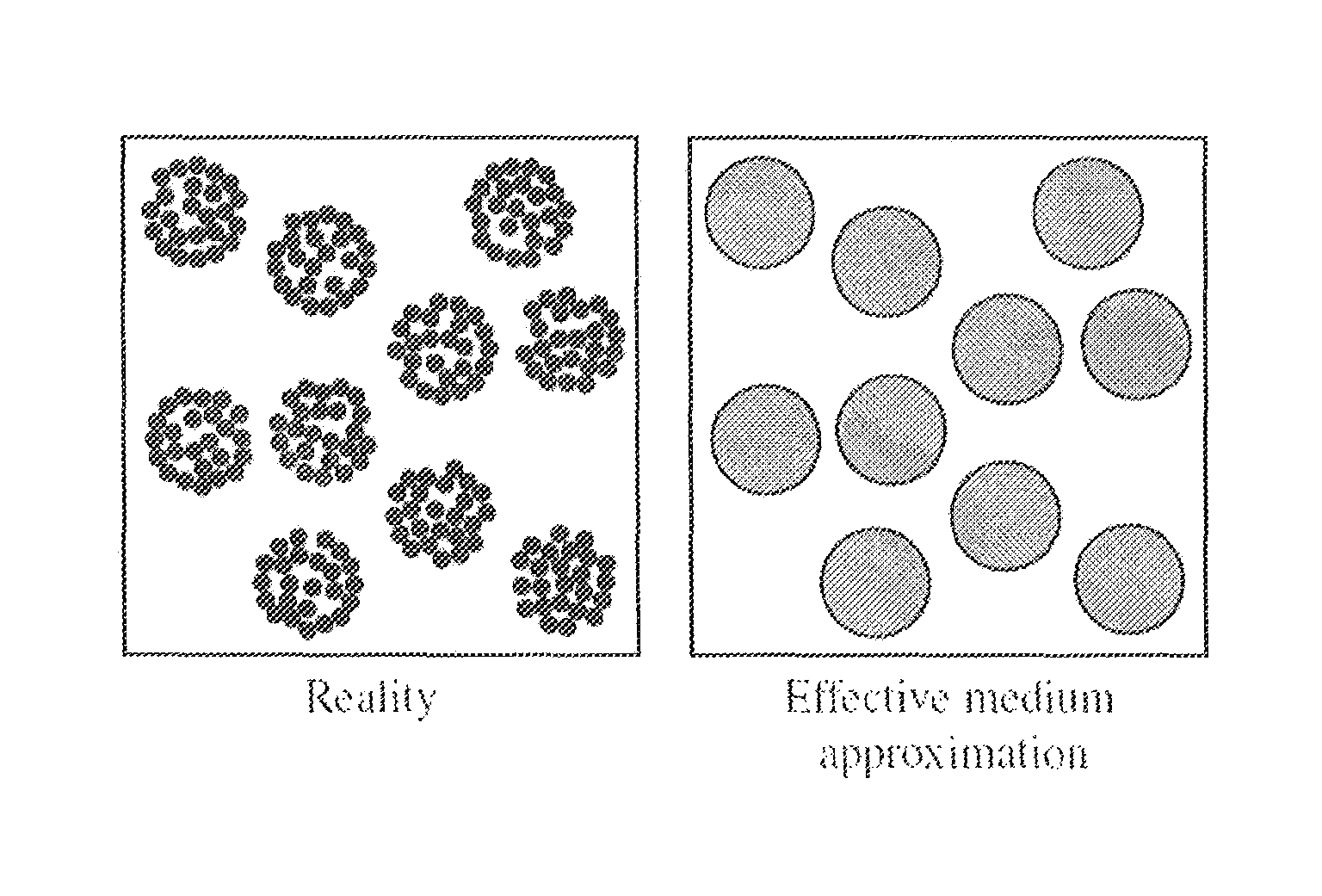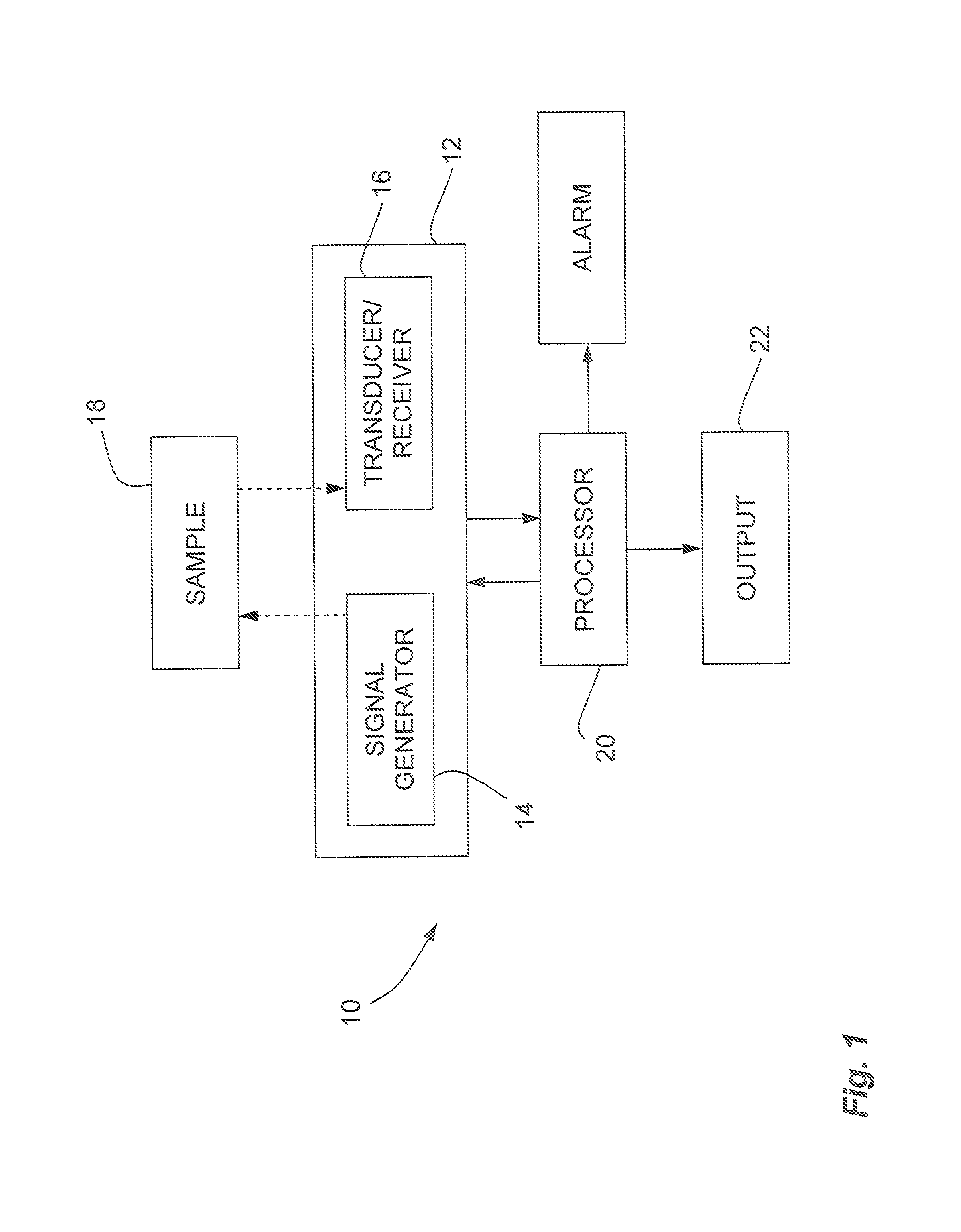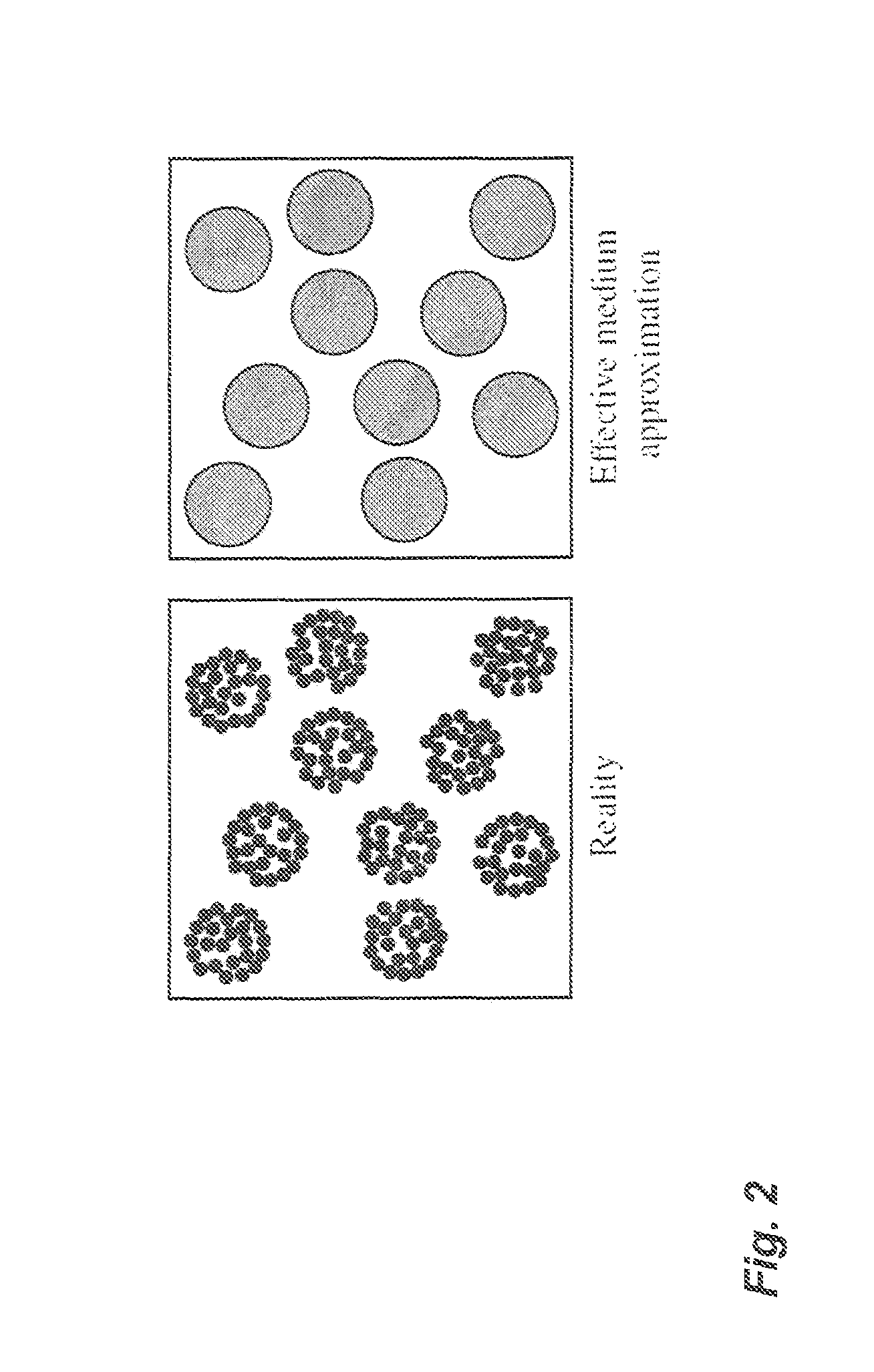System and method for ultrasound scatterer characterization
a technology of ultrasound scatterer and ultrasound, applied in the field of ultrasonic scatterer characterization, can solve the problems of not being suitable for all applications, unsuitable for characterizing dense concentrations of scatterers, and modeling blood backscattering
- Summary
- Abstract
- Description
- Claims
- Application Information
AI Technical Summary
Benefits of technology
Problems solved by technology
Method used
Image
Examples
experimental study
[0063]An experimental set up was set forth to implement the proposed method and to demonstrate the practical value of the proposed EMTSFM method.
[0064]In the experimental set up, fresh porcine whole blood was obtained from a local slaughter house, centrifuged and the plasma and buffy coat were removed. Three blood samples were then prepared: (i) a S6 reference sample, which was a 6% hematocrit non-aggregating RBCs resuspended in saline solution; (ii) a S20 reference sample, which was a 20% hematocrit non-aggregating RBCs resuspended in saline solution; and (iii) a 20% hematocrit T20 test sample, which consisted of RBCs resuspended in plasma to promote aggregation.
[0065]All ultrasound measurements were made at room temperature. Prior to each measurement, the T20 blood was sheared at 200 s−1 during 30 s to disrupt RBC aggregates. The shear rate was then reduced to residual values of 2, 5, 10 and 50 s−1 for 90 s until an equilibrium in the state of aggregation was reached. For each she...
PUM
 Login to View More
Login to View More Abstract
Description
Claims
Application Information
 Login to View More
Login to View More - R&D
- Intellectual Property
- Life Sciences
- Materials
- Tech Scout
- Unparalleled Data Quality
- Higher Quality Content
- 60% Fewer Hallucinations
Browse by: Latest US Patents, China's latest patents, Technical Efficacy Thesaurus, Application Domain, Technology Topic, Popular Technical Reports.
© 2025 PatSnap. All rights reserved.Legal|Privacy policy|Modern Slavery Act Transparency Statement|Sitemap|About US| Contact US: help@patsnap.com



